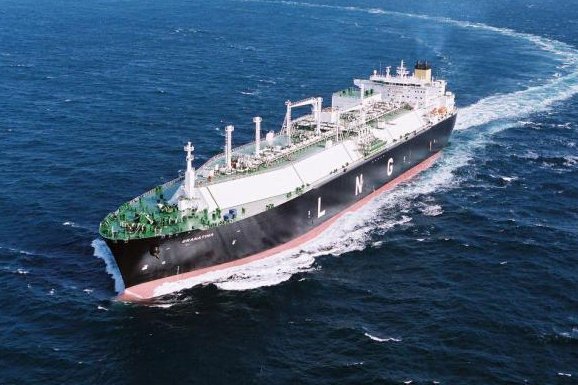The United States is on pace to become one of the largest LNG exporters in the world, federal data show. Photo courtesy of Royal Dutch Shell
March 27 (UPI) -- The United States is on pace to become the third-largest exporter of liquefied natural gas by 2020, behind Australia and Qatar, a federal report found.
The U.S. Energy Information Administration reported total LNG exports quadrupled in 2017 from the previous year. All of the LNG shipped from the United States came from the Sabine Pass terminal in Louisiana, reaching more than two dozen countries.
Four more terminals are expected online within the next two years, boosting export capacity from 1.94 billion cubic feet per day last year to 9.6 billion cubic feet per day.
"As export capacity continues to increase, the United States is projected to become the third-largest LNG exporter in the world by 2020, surpassing Malaysia and remaining behind only Australia and Qatar," EIA stated.
More than half of all LNG exports targeted the Asian and Mexican markets, with Mexico accounting for the largest amount with 20 percent of the total shipped in 2017.
In Asia, the market price for U.S. natural gas is competitive against other suppliers. South Korea was just behind Mexico, with 18 percent of the total U.S. LNG exports last year. China took 15 percent of the total in 2017, with a strong surge coming in the waning months of the year.
Cheniere Energy in February became the first U.S. company to sign a long-term LNG supply agreement with China. And even while hitting China with new tariffs last week, U.S. Commerce Secretary Wilbur Ross said it would be "logical" for the second-largest economy to import more LNG from the United States.
Alaska's government and the Alaska Gasline Development Corp. have an agreement with Chinese lenders and China Petrochemical Corp., or Sinopec, to advance discussions on the LNG potential in Alaska.
The National Defense Authorization Act, meanwhile, said U.S. efforts should promote energy security in Europe, stating Russia uses energy "as a weapon to coerce, intimidate and influence" countries in the region.
European natural gas production is on the decline, leaving the broader energy market vulnerable to export markets. Russia is the largest gas exporter to Europe and most of that gas runs through Soviet-era pipelines in Ukraine, where geopolitical issues create risk.
Shale natural gas from the United States has made its way to the European market in the form of LNG. European countries collectively accounted for the third largest share of LNG export from the United States last year.
"An energy policy where we can deliver energy to Eastern Europe, where we are a partner with people around the globe, where they know that we will supply them energy and there are no strings attached is one of the most powerful messages that we can send to Russia," U.S. Energy Secretary Rick Perry said last week.















